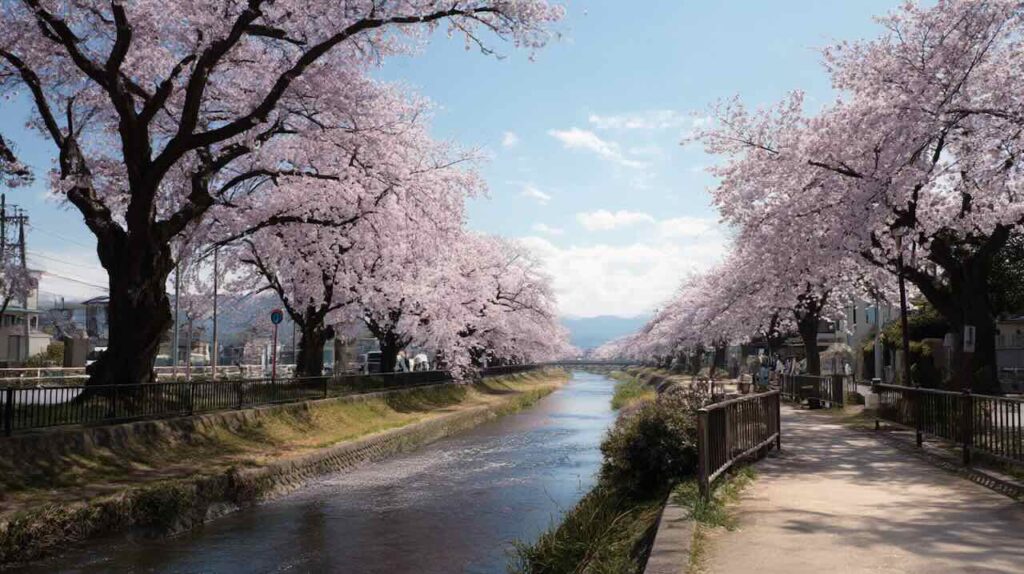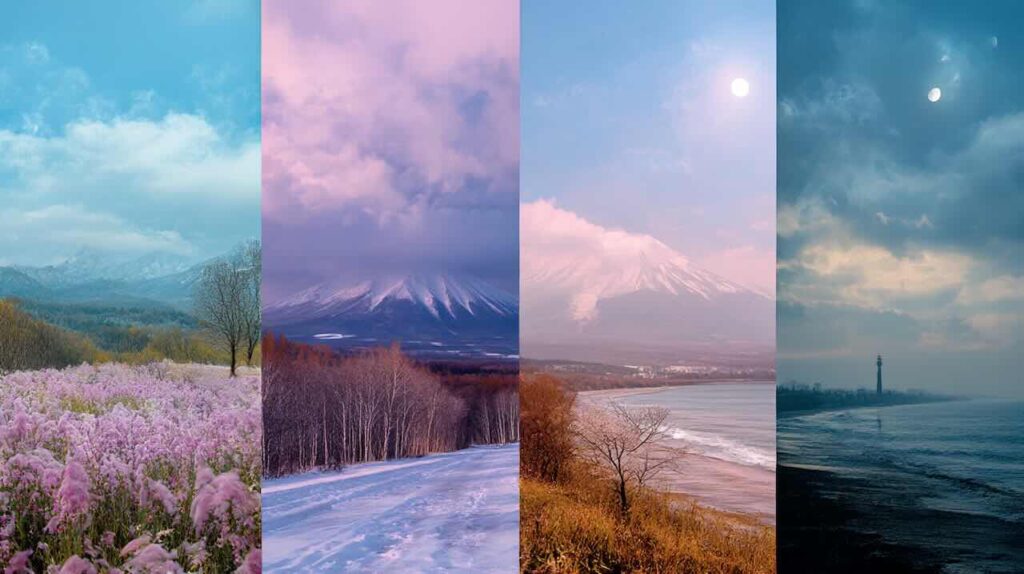- Introduction: A Signature of Japanese Spring
- 1. A Celebration of Flood Control and Public Works
- 2. Cherry Trees’ Shallow Roots Make Them Ideal for Levees
- 3. A Poetic Harmony Between Blossoms and Water
- 4. Open Public Spaces for Hanami and Festivals
- 5. Cherry Trees as Community Landmarks and Flood Markers
- 6. Fast Growth, Quick Rewards for Communities
- Conclusion: More Than Just Beauty—A Living Symbol of Japan
Introduction: A Signature of Japanese Spring
If you visit Japan during spring, you’ll quickly notice a recurring scene: rivers and streams framed by rows of delicate pink cherry blossoms. From Kyoto’s Philosopher’s Path to quiet rural creeks, this pairing of flowing water and falling petals defines Japanese springtime.
But have you ever wondered why so many cherry trees are planted beside rivers?
The answer is far richer than just visual beauty. In this article, we’ll explore the cultural, historical, practical, and environmental reasons behind this beloved landscape—and how it reflects Japan’s relationship with both nature and community.
1. A Celebration of Flood Control and Public Works
During the Edo period (1603–1868), Japan faced constant threats from floods, typhoons, and seasonal rains. To protect farmlands and growing towns, feudal lords and local officials built extensive flood-control systems, including levees, embankments, and canals.
When these public works were completed, cherry trees were often planted along the newly constructed riverbanks to commemorate the achievement. The blossoming trees stood as living symbols of protection, rebirth, and gratitude for the communities they shielded.
Even today, many of Japan’s most famous riverside cherry blossom spots trace their origins back to these historical flood control projects.
2. Cherry Trees’ Shallow Roots Make Them Ideal for Levees
Unlike deeper-rooted trees that might threaten levee stability, cherry trees—particularly the Somei Yoshino variety—have wide, shallow root systems. This makes them uniquely well-suited for planting along riverbanks:
- They won’t damage underground flood-control structures.
- Their roots stabilize the surface soil without compromising the embankment’s integrity.
- Their manageable size makes maintenance easier, even in narrow spaces.
In short, cherry trees offer both safety and beauty—a rare combination in urban landscaping.
3. A Poetic Harmony Between Blossoms and Water
The Japanese aesthetic sensibility of wabi-sabi finds beauty in transience, and nowhere is this more apparent than in the pairing of cherry blossoms with flowing water:
- Petals drifting onto the water’s surface evoke the fleeting nature of life.
- Rivers create stunning reflections of pink blooms, doubling the visual effect.
- As petals fall, they form delicate pink carpets on the water—a fleeting, ethereal scene cherished by generations.
During peak season, many rivers are lit up for night-time cherry blossom viewing (yozakura), creating dreamlike spectacles that blend light, water, and impermanence—a perfect embodiment of Japanese seasonal beauty.
4. Open Public Spaces for Hanami and Festivals
Unlike tightly packed urban areas, riverbanks often remain open and undeveloped for flood control purposes. This makes them ideal for seasonal gatherings:
- Hanami (flower-viewing) picnics with family, friends, and coworkers
- Temporary food stalls and festival booths during cherry blossom season
- Open-air concerts, performances, and community events
These open spaces allow people from all walks of life to gather under the trees, turning riversides into vibrant social hubs every spring.
5. Cherry Trees as Community Landmarks and Flood Markers
For many communities, riverside cherry trees serve not just as decoration but as practical reference points:
- After floods, locals might say, “The water rose to the third cherry tree.”
- The trees serve as easily recognizable meeting points during natural disasters.
- Throughout the year, they provide shade, shelter, and seasonal markers for residents.
In this way, cherry trees become part of local memory and disaster preparedness, linking natural beauty with practical community life.
6. Fast Growth, Quick Rewards for Communities
Cherry trees like Somei Yoshino are:
- Fast-growing, blooming after just a few years.
- Relatively affordable for municipalities to plant.
- Low-maintenance compared to other urban trees.
This allows cities and towns to quickly revitalize riverbanks after maintenance work or natural disasters while creating beautiful, inviting spaces for residents.
Conclusion: More Than Just Beauty—A Living Symbol of Japan
The sight of cherry blossoms lining Japan’s rivers isn’t just a springtime postcard—it’s a living testament to centuries of urban planning, environmental wisdom, cultural symbolism, and communal care.
From flood control and safety to aesthetics and spiritual meaning, these trees are deeply rooted not only in soil but in Japan’s identity itself.
So the next time you stroll beneath riverside cherry blossoms, know that you’re walking through layers of history, nature, and quiet resilience—a perfect reflection of Japan’s enduring relationship with the seasons.


